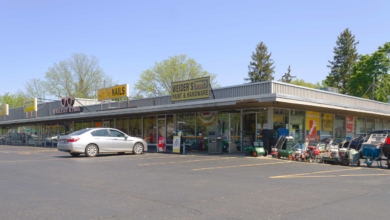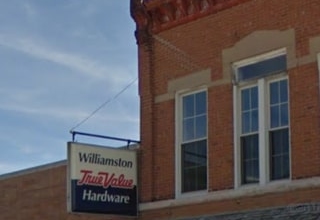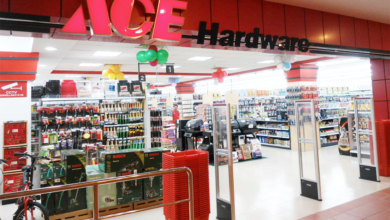NAHB Seeks Solution to Soaring Lumber Prices

Amidst a backdrop of record high lumber prices, the National Association of Home Builders (NAHB) is seeking to address supply chain disruptions and tariffs that are contributing to price volatility in the marketplace.
Toward this end, letters were sent at the end of July to Commerce Secretary Wilbur Ross, U.S. Trade Representative Robert Lighthizer and Zoltan van Heyningen, executive director of the U.S. Lumber Coalition.
NAHB is seeking a meeting with Secretary Ross to discuss strategies to ease market concerns for builders and consumers alike. Tariffs on Canadian lumber imports into the U.S. average more than 20 percent and NAHB is calling on Ross to return to the negotiating table with Canada and redouble efforts to reach a new softwood lumber agreement. NAHB is also requesting the secretary to reach out to domestic lumber producers and urge them to increase lumber production to address shortages that are contributing to soaring prices.
The letter to U.S. Trade Representative Lighthizer carried a similar message: antidumping and countervailing duties currently in place on imported softwood lumber from Canada are aggravating already high lumber prices, and tariffs on other products are also contributing to higher construction costs leading to more expensive housing.
“Today, we reiterate our concerns that the ongoing dispute remains unresolved, leading to further disruptions in the consistent supply and availability of lumber for housing,” NAHB’s letter to Lighthizer stated. “We know there are many pressing trade matters affecting the U.S. economy, but the softwood lumber dispute is one that should not be left on the back burner. Lumber supply, housing affordability and an industry with the potential to lead the U.S. out of the current pandemic-induced recession should not be ignored. We urge the USTR to work with Canada to develop a workable and long-term solution to a trade dispute that has continued for more than 37 years.”
NAHB’s message to the U.S. Lumber Coalition was a request to work together to address shortages in the lumber supply chain caused in part by the current pandemic. “Based on current events, increased production would be beneficial in easing supply constraints builders and other lumber consumers are currently facing. Our respective industries are facing challenges during this time and we stand ready to work with you on solutions to improve these circumstances,” the letter said.
The Random Lengths Framing Composite Price hit a record $627 per 1,000 board feet for the week ending July 31, marking the first time prices have topped the $600 level. Framing lumber prices have soared 80 percent since mid-April, while the price of oriented strand board hit $550 per 1,000 board feet at the end of July—up a whopping 138 percent from a year ago.
The primary drivers of the framing lumber and OSB price increases include:
- Mills closed in the spring due to stay-at-home and social distancing measures enacted by state and local governments.
- When prices fell between March and April as a result of the COVID-19 pandemic, mills projected that housing would be adversely affected and therefore anticipated a large drop in demand. Accordingly, mills that remained operational substantially decreased capacity utilization.
- Producers did not anticipate the massive uptick in demand from do-it-yourselfers (DIY) and big box retailers during the pandemic.
- Housing weathered the storm much better than most anticipated.
- DIY demand has not abated much as states reopen and construction demand has far surpassed lumber mills’ projections.
- The recent spike in all northern U.S. and Canadian species has no doubt been exacerbated by the lumber tariffs averaging more than 20% on Canadian imports into the U.S. market.
NAHB Chief Economist Robert Dietz provided the following economic outlook in the bi-weekly newsletter “Eye on the Economy” on July 22.
The remarkably strong data for home construction has continued in recent weeks. The NAHB/Wells Fargo Housing Market Index (HMI), a measure of single-family builder sentiment, returned to its pre-recession level of 72, up from a low of 30 in the spring. The quick advance of the HMI over the course of the summer is a strong indicator of an acceleration of single-family construction, which is required to meet ongoing solid demand for housing.
The annualized pace of single-family permits increased 12 percent in June, according to Census/HUD data. While single-family starts are down for 2020 due to government-imposed lockdowns and the economic fallout of the COVID-19 crisis, the decline is smaller than what was forecast. Single-family starts are down just 1.3 percent compared to the first half of 2019. However, this small decline is partly due to weak construction data at the start of 2019. Nonetheless, soft production levels in the spring stemming from the pandemic have left the total number of single-family homes currently under construction near a three-year low of 497,000 homes.
While single-family construction data have come in strong, multifamily permits are down 14 percent thus far in 2020 for properties with five or more units, with additional weakness expected due to concerns over future rent payments. In contrast, the remodeling market is weathering the storm well. In fact, the NAHB Remodeling Market Index (RMI) registered a score of 73 for the second quarter, reflecting positive market sentiment in the home improvement sector due to a growing focus on the importance of home for most families as a place to live, work and study.
As we have been forecasting since March, housing should be a bright spot for the economy, particularly given historically low interest rates and the increase in housing demand for low density communities. However, risks remain: At the macroeconomic level, layoffs continue to be elevated, with 1.3 million new job losses reported for the week ending on July 4. And ongoing, continuing jobless claims imply an unemployment rate of approximately 13 percent.
For builders, access issues and delivery delays for building materials are increasingly yielding higher prices. In particular, lumber prices continue to climb, reaching an average price of more than $550 per thousand board feet in mid-July—the highest since the tariff-induced run-up of prices in 2018. While sawmill employment increased in late spring in the United States, a resolution of the U.S.-Canadian softwood lumber dispute would more significantly boost housing, and in turn, the overall economy.
More information can be accessed on NAHB’s Coronavirus Preparedness page.

Subscribe for Free
The Hardware Connection is a digital magazine targeted to independent hardware/home improvement retailers. It is the only industry magazine designed and distributed solely in electronic format and currently reaches over 60,000 people in the two-step channel.
The Hardware Connection publishes four Newsletters each year in addition to eight magazine issues.
To sign up yourself or additional staff to a free subscription to receive The Hardware Connection magazine and newsletter in electronic format, please click here.







